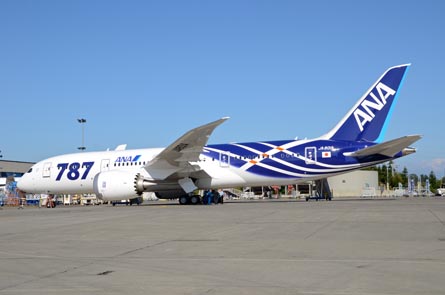Boeing plans a dedicated mission-control centre to monitor its early 787s in service by harnessing live data streamed from the aircraft.
By harnessing live data from the 787's Airplane Health Management (AHM) system, Boeing aims to deliver 777-level dispatch reliability on its 787 fleet.
Housed in the airframer's 40-88 building at its Everett, Washington campus, the 787 Operational Control Center (OCC) will be manned 24 hours a day with six to seven staff on each of the three daily shifts.
The facility will be staffed by Boeing personnel handing engineering, material management, service engineers and flight test staff.
The OCC is modelled on the company's commercial aviation services unit's Boeing Operations Center (BOC) near Renton, Washington, which is aimed at returning aircraft classified as aircraft on the ground (AOG) to revenue service.
 |
|---|
© Jon Ostrower/Flightglobal |
"It's like a little mini-BOC," said Mike Fleming, 787 director of services and support, who said the OCC supported the 787 flight test aircraft during extended operations (ETOPS) and system functionality and reliability testing this summer.
"Once we go into service, it will be focused on the in-service airplanes," said Fleming.
As well as AOG avoidance, the operations centre would monitor live data coming from the aircraft, he added.
Fleming said the OCC was "looking at data proactively to get ahead of anything before it [becomes] AOG to make sure we can undertake [preventative] maintenance to stop it getting into that situation".
The arrival of live AHM, which did not exist on the same scale when the 777 first entered service in 1995, had enabled use of the OCC to bolster the 787's dispatch reliability, he added.
"Our customer, All Nippon Airways, has the highest reliability goals in the world. The competition over there is high-speed trains, which have very high reliability. So for us and for our customers, the expectation is that we will rapidly achieve 777-levels of reliability and, in fact, surpass those."
Source: Flight International























